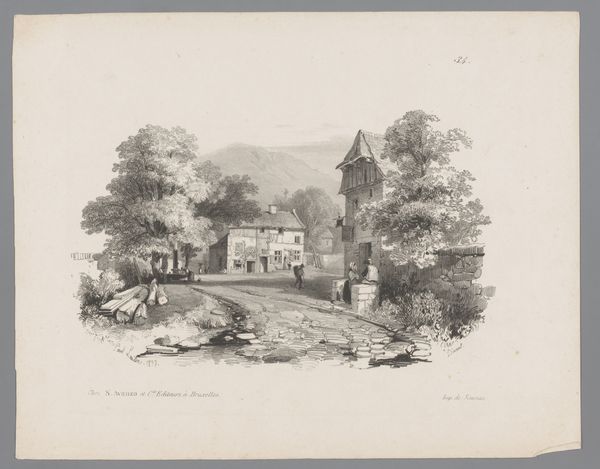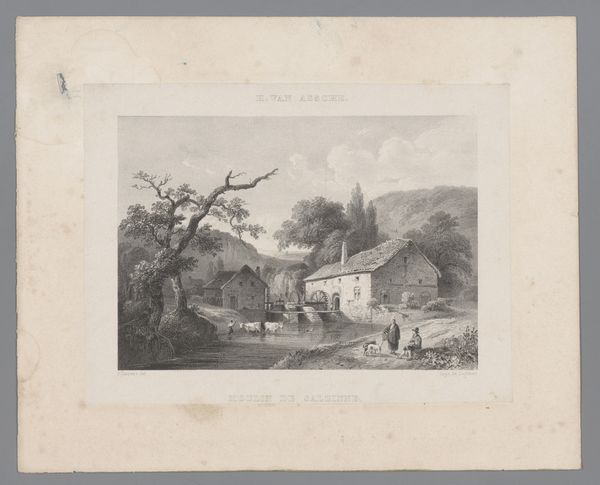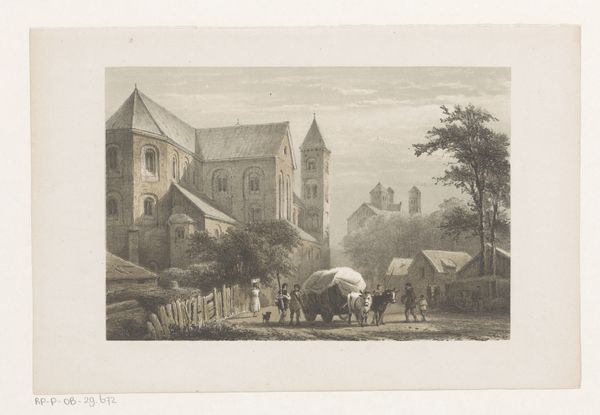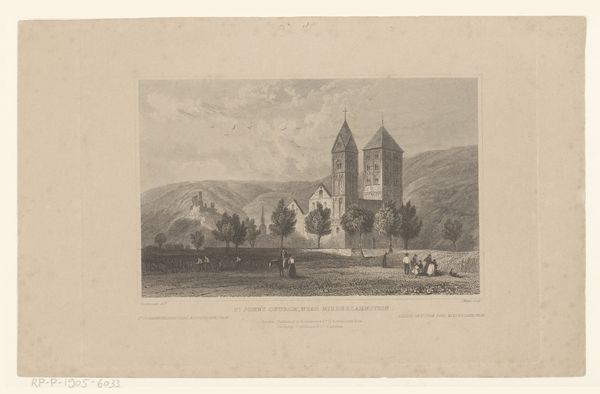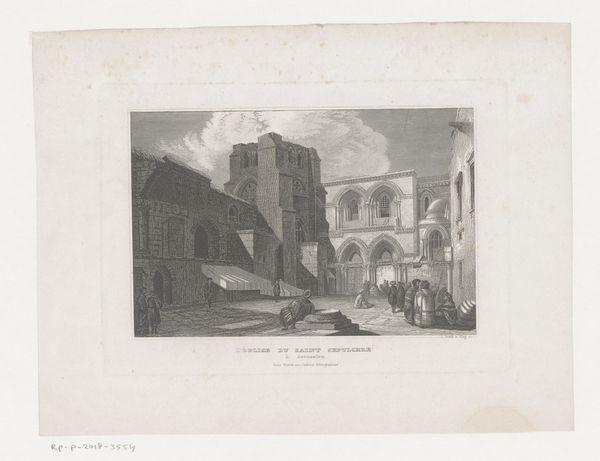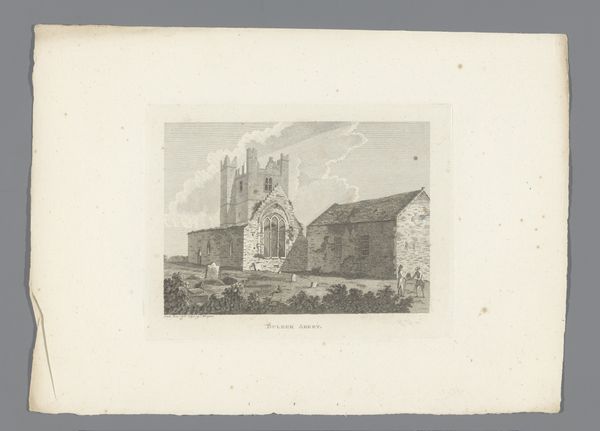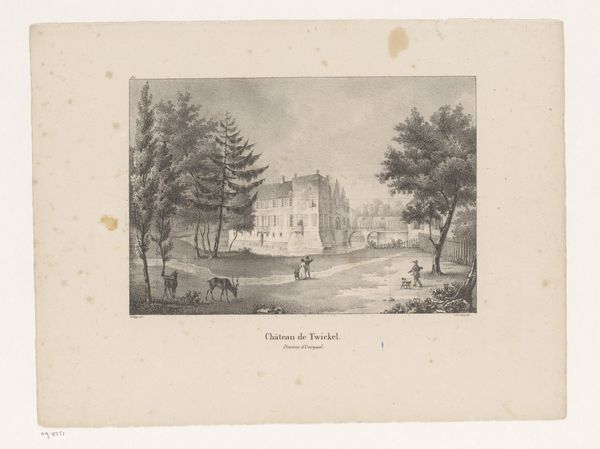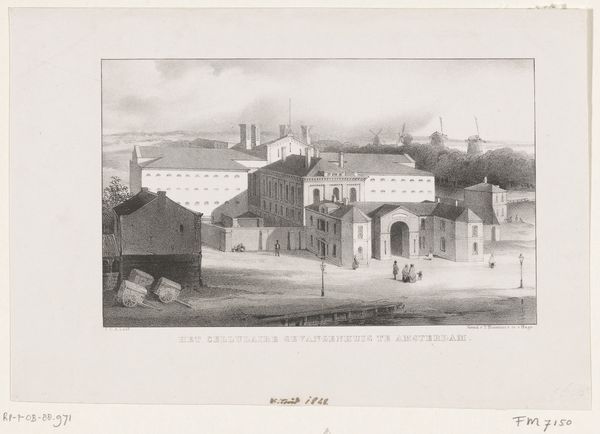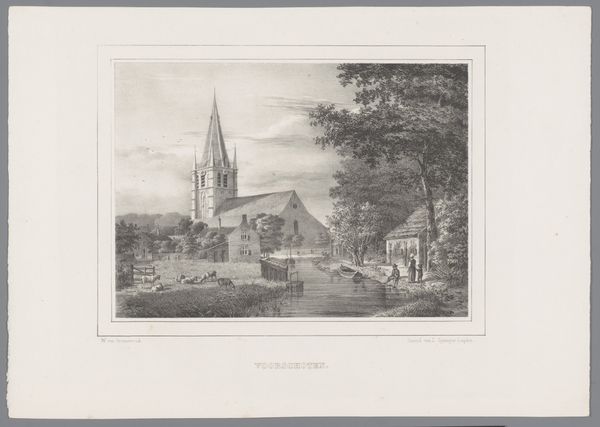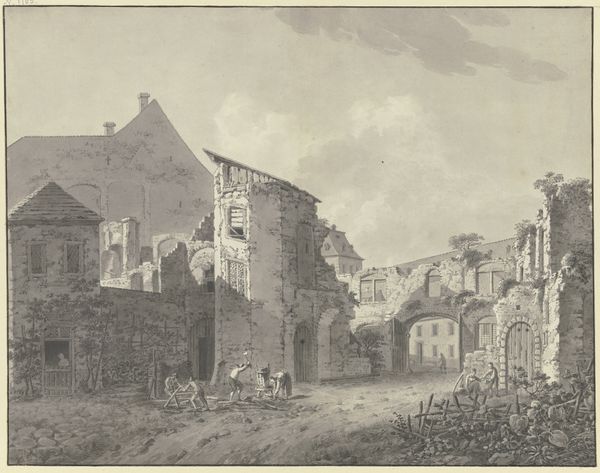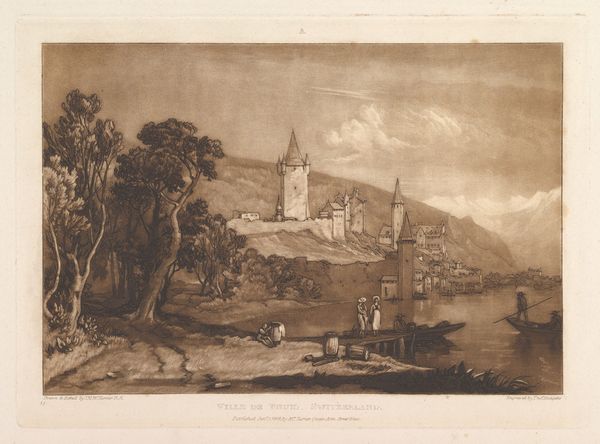
Zicht op de abdij van Léhon met de Chapelle des Beaumanoir 1858 - 1863
0:00
0:00
Dimensions: height 291 mm, width 435 mm
Copyright: Rijks Museum: Open Domain
Curator: This is Léon Auguste Asselineau’s “View of the Léhon Abbey with the Chapelle des Beaumanoir," made sometime between 1858 and 1863. Editor: My first thought is of faded glory; the stark architectural details against the subdued tones evoke a palpable sense of melancholy. Curator: Melancholy resonates here, certainly. The skeletal remains of the abbey speak volumes, its missing stones and gaping windows echoing lost histories and vanished devotions. It is quite typical for Romanticism to dwell on the sublime mingled with ruins. Editor: And I find myself wondering about Asselineau’s etching process. The level of detail he achieves in rendering the textures of stone and foliage indicates meticulous labor. It also makes me curious about the division between artistic conception and the physical demands of such a printmaking task during that period. Curator: Well, think of the symbols embedded in this vista. The church, even in decay, is placed high above, a testament to the enduring presence of spiritual power, and look at how it dominates even this detailed composition. Even its state of ruin serves as a visual metaphor. Editor: I'm not so sure about the presence of spiritual power... I am drawn more to how this view, from the labor that created this print, might be distributed as part of an illustrated volume or individual prints; consumption, dissemination, and thus creating a market. This also speaks of shifting priorities in French society at the time. Curator: Perhaps both ideas exist in the print – its consumption as a souvenir but also contemplation of time, faith and history. Asselineau manages to capture not just a physical place, but a potent blend of human experience over the ages. Editor: Indeed. Seeing it through both our perspectives illuminates so much more about the object as a product, while appreciating it as a symbol is quite the interesting contrast. Curator: Absolutely. It is in the intersection of materiality and symbolism that we find the artwork's enduring appeal, reflecting upon its layered histories and persistent emotional weight.
Comments
No comments
Be the first to comment and join the conversation on the ultimate creative platform.
